What does boucle look like and what is sewn from fabric?

Boucle is a fabric with a unique relief texture, which is in special consumer demand. From the material in this article, you will learn what it is, what it is, when it appeared, how it is used, how to care for it in order to extend its service life.

What it is?
Boucle is a textile with a knotted or looped structure of threads and a plain weave. It has an uneven front surface, the material is voluminous and soft to the touch. It lives up to its name, which in French means "curly, curly."

Visually similar to astrakhan, it has similar ring-shaped curls. In this case, the texture is different. The threads used in production differ in thickness, size of loops and knots.
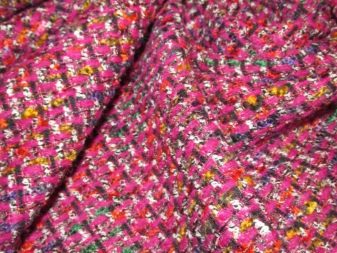

The basis of the canvas is a shared thread. The transverse loops perpendicular to it. The canvas itself is matte, light and loose.
Its stretch ability is small, so the accuracy of the fit on the figure depends on the correct cut. The fabric is quite specific and selective in decor.
It is universal and refers to fabrics "for both the feast and the world." Looks great in everyday looks, decorates the bow on special occasions. Always in trend, attracts attention.
Clothes made of it are perfect for tall and slender women. She can emphasize completeness.


It has a stylish look, it is wrinkle resistant, durable and practical to use. Refers to materials for demi-season purposes with optimal heat-saving properties.
Boucle does not have a specific pattern, its key elements are arranged in a chaotic order.At best, a pattern can be called melange canvases, in the production of which threads of a contrasting color are used.


Rare manufacturers try to create classic ornaments on such a surface. However, both the cage and the crow's feet on such a texture do not have a clear expression.
The retail price of 1 running meter ranges from 600 rubles and more. Designer fabrics cost over 1,000 rubles.
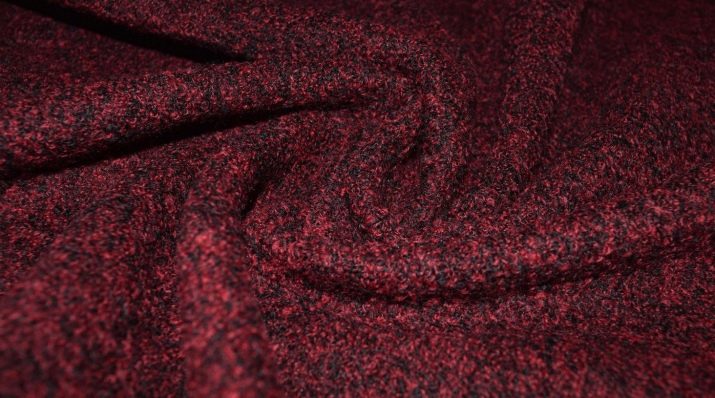
History of appearance
Bouclé fabric was noticed in the middle of the 20th century. The general public learned about her thanks to Coco Chanel. Initially, jackets and skirts were sewn from it - traditional elements of the costume of their time.
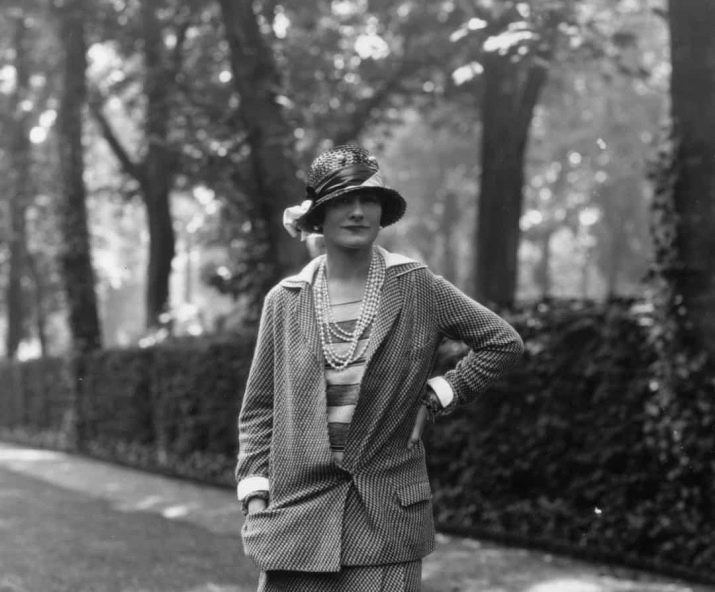
These clothes were the standard of good taste. Since 1960, it has been in the wardrobes of the actors' elite, and has been worn by politicians.
Admirers of the style were Sophia Loren, Audrey Hepburn, Jacqueline Kennedy, Hillary Clinton. The fabric was popular with many designers. Products from it were in almost every collection of the Fashion Week.




Over time, she regained its former popularity. They began to sew dresses and shorts from it. Materials with a lesser thickness were used to create summer clothing. She was appreciated by Maggi Ruff and Jacques Heim.

Today, fancy or crepe yarn is used for its production. Thanks to the new interwoven fibers, the scope of application has also expanded. The texture of the boucle gave impetus to the production of bouclé knitting yarns.


During the manufacture, GOST 28000-2004 is used. This takes into account the surface and linear density, the thickness of the threads along the warp and weft, as well as other characteristics.

Specifications
The material is in demand among buyers due to a number of unique features. Despite the thick threads, it is light and voluminous. It features optimal breathability.
It is considered a "breathable" material, easy to work with. It does not drape, but folds well with an iron. It is ironed easily and quickly, it looks elegant and aesthetically pleasing.

It is used to make products of romantic, business or classic style. Due to its structure, it masks sewing defects and irregularities. Along with this, it shrinks after washing, is unstable to accidental mechanical tightening and snagging.



Because of this, modern women of fashion, having put on a bouclé item, have to give up jewelry with sharp elements.
Besides, the fabric has increased shedding of the threads. They try to sweep the cut parts on the overlock as quickly as possible. Ready-made clothes visually increase the volume of a person. It is not suitable for everyone.

The material is pliable in work, practical to wear and does not cause discomfort. Together with the lining, it keeps its shape well, looks expensive and high-status.
The material is practically non-slip, but builds up static electricity. He has average indicators of water resistance and capillarity, he is vapor permeable. The average value of cycles until the web breaks at the test site is 3500.


Boucle goes well with different fabrics. The material is combined with denim, lightweight smooth fabrics. If there are bouclé items in your wardrobe, you can always pick up a couple of additions to them to complete a stylish look.



Species overview
Bouclé textiles differ in composition and weave density. Natural linen is made from wool, silk and cotton. The merino wool material has a subtle shine to the front.
The combined fibers can be woven into fibers of viscose, acrylic and other artificial materials. For example, polyester is one of the common options.
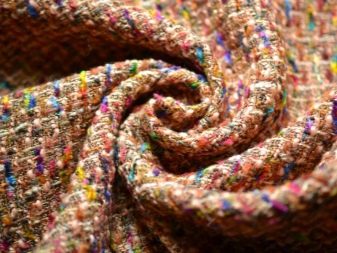

Its prevalence in the structure increases the wear resistance of the material and its inertness to fading. It practically does not wrinkle and can last longer than other analogues.

Its texture can be created in different ways. In one case, threads of the same thickness with identical bumps are used in the work. In another, threads with a nodular structure of different sizes are woven into the base.
Also, during production, they can create an interesting structure by means of different tension of the threads used. For example, when 2 are used at once, then one of them is positioned freely, and the other with tension. As a result, the free thread creates a loop, and the lower one is a semblance of its anchor.

The knots, or so-called loops, threads are different. They differ in the strength of twisting, they can be very small, dense and loose, fluffy and smooth.
A separate type of boucle is bouclé knitwear. Initially, it was knitted by hand. Today they are created in factories from synthetic raw materials. Due to this, the canvas is characterized by a certain elasticity.

Boucle differs in the country of origin and destination. Textiles are produced in Austria, Italy, Turkey, France. Quality products are manufactured in Great Britain, China and South Korea.
There are 4 types of fabric: it is coat, costume, upholstery, interior. The difference between materials is in thickness, density, softness, tear resistance, abrasion.

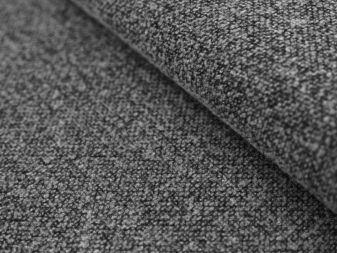

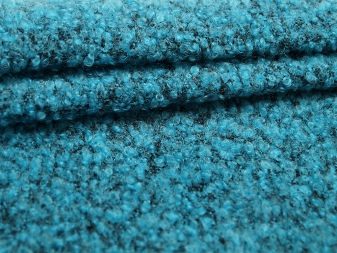
Color solutions are multifaceted. The bouclé fabric has many shades, which are conventionally combined into several groups. The main ones are neutral, natural, bright and dark.
There are many beautiful colors in each line. This expands the range of products made from the material. As for the canvases with a pattern, the most in demand from this group are striped and checkered options.

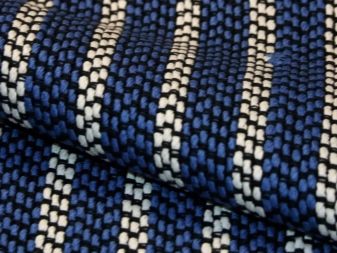
Areas of use
Depending on the type, boucle is used for sewing outerwear (coats and lined suits) of different price segments.
In production and in the atelier, the raw materials in question are used not only as warm coat fabric. From fabrics with a large texture and optimal elasticity, cardigans are created that are in no way inferior to traditional knitted sweaters.


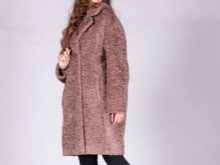
From the suit bouclé, elegant women's jackets with a single-breasted fastener, ponchos and jackets of various styles are obtained. Bouclé tunics, warm autumn semi-fitted dresses, warm stoles and office suits look spectacular.


The fabric does not tolerate excesses. She looks great in clothes with a laconic cut and simple lines. This applies not only to summer, but also to thick canvases.
Synthetic textiles have found their way into the furniture industry. They are used to cover sofas, armchairs, seats and backs of chairs and other furniture.
Banquets, poufs are upholstered with furniture fabric, it is used to decorate the headboards of beds. Covers for sofas, their backs, seats, armrests are sewn from this textile.


In this case, the style of the covers is usually laconic. In addition to options that repeat the shape of furniture, these can be products in the form of capes. Needlewomen create blankets and bedspreads from this material.

Inserts made of this material can decorate sets of covers for a car interior. It looks great with different textiles with a dense texture.
Thin varieties of material are used to design window openings. They make extraordinary curtains and curtains. They perfectly complement the textile solution in different design styles.
Boucle is used in needlework. One of the most popular areas is the production of hats and scarves. In addition, souvenirs and soft toys are sewn from it, it is used to create needle beds.
Some needlewomen choose boucle for making soft rugs and hats, as well as decorating handbags.



Care rules
Boucle is not a capricious material. However, in order for it to serve for a long time and maintain its original aesthetics, it is necessary to follow the basic rules of care.
Given the tendency to shrinkage of fabrics made from natural fibers, it is not recommended to wash loose fabrics. On the other hand, synthetic washing is shown at low temperature and delicate mode.
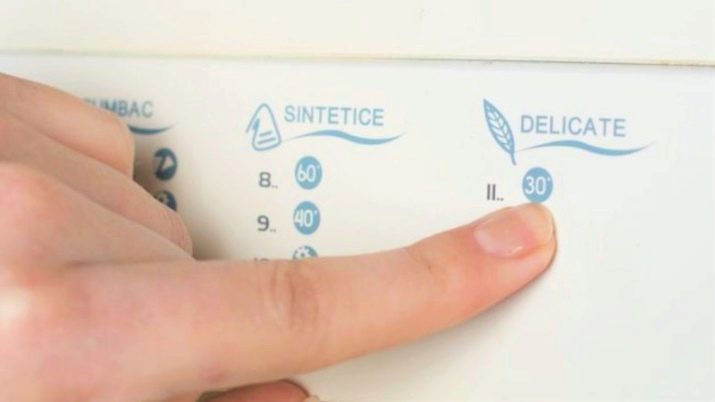
Contrary to popular belief, you should not try to get rid of dirt by brushing the surface. This will lead to a violation of the bouclé texture, change the uniformity of the knots at the processing site.
From such manipulations, a pilling is formed on synthetic fabrics. It is preferable to wash products by hand at temperatures up to 30 degrees. This is enough to get rid of fresh stains and dirt.

Woollens are not recommended to be washed due to the fact that they are made from fibers with a hollow structure. During washing, they shrink and shrink.
If you have doubts about washing, you can use the dry cleaning services. However, it must be taken into account: it can affect the structure of natural threads.
It is best to use a liquid detergent for washing. You need to carry out the procedure by turning the product to the wrong side, so as not to harm the canvas.
You can't bleach the material, it won't stand it. You cannot wash it with other things. If the machine wash option is selected, a 10-minute spin at minimum speed is allowed.
Do not twist the garments too much after washing. You need to dry things in a horizontal position so as not to warp or deform them.
The drying time must not be artificially shortened. The use of heaters or heating radiators for this is excluded. Do not iron things with a hot iron.
The processing of things must be done through a thin cotton fabric from the wrong side. Without it, weasels are formed. Especially carefully you need to iron the places of darts, facing, collar lapels.

If pellets appear on the fabric, this is not a reason to get rid of them. Such a rush is fraught with pulling the threads out of the general structure, breaking the tension, tightening.
If you are trying to pull off the pilling, you can pull out the knotted thread. You won't be able to insert it back, even if you try hard. If this is so necessary, it is easier to trim the spools with nail scissors.

Pilling removers are not always effective. Hair that has accumulated on the surface should be removed with a regular sticky roller.
You need to store the bouclé items correctly. If it is a blanket, a bedspread, a product without a lining, it is better to put the thing on the shelf, having previously rolled it up.
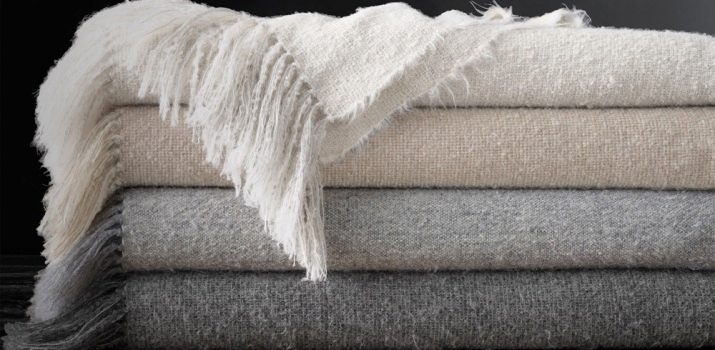
Jackets and coats with a lining cannot be removed like this. Therefore, they will have to be hung on a hanger. Considering that dust has the ability to penetrate anywhere, the item can be “covered” with a protective cover.









